
I have now completed travel across (almost) the entire Welsh mainline railway network. Every line through almost every station!
Now I am working my way through the nation’s Heritage trains!
Even as a dedicated train enthusiast, I find navigating Wales/Cymru’s railway network more confusing and frustrating than it should be. But through all the challenges and surprises, I’ve learnt to untangle the mysteries of Welsh rail travel. Here’s what I’ve learned:
Major Welsh Train Routes
You can essentially divide the railway system of Wales/Cymru into nine distinct routes. Here is a summary with more detailed information below:
- North Wales Coast Line: connecting Chester (England) to Holyhead, serving the North Wales coastal area and offering access to several popular destinations
- Conwy Valley Line: from Llandudno Junction to Blaenau Ffestiniog, passing through the scenic Conwy Valley and providing connections to Snowdonia National Park.
- Cambrian Coast Line: along the Welsh coast from Pwllheli to Machynlleth, offering scenic views of Cardigan Bay and picturesque coastal towns.
- Cambrian Main Line: connecting Shrewsbury (in England) to Aberystwyth, across central Wales/Cymru, through key towns like Welshpool and Machynlleth.
- Heart of Wales Line: rural line from Craven Arms (in England) to Swansea, passing through scenic countryside and small Welsh towns, including Llandrindod Wells and Llandovery.
- Marches Line or Marches Route connecting Nort and South Wales
- South Wales Main Line: from London Paddington to Swansea, passing through major Welsh cities like Cardiff and Newport.
- Valley Lines/ SouthWest Metro: a network of commuter lines that serve the South Wales Valleys, connecting Cardiff to towns like Merthyr Tydfil, Treherbert, Aberdare, and Cardiff Airport.
- West Wales Railway Network: This network includes lines running from Swansea to West Wales destinations like Carmarthen, Milford Haven, and Fishguard Harbour.
Welsh Trains- The Positives
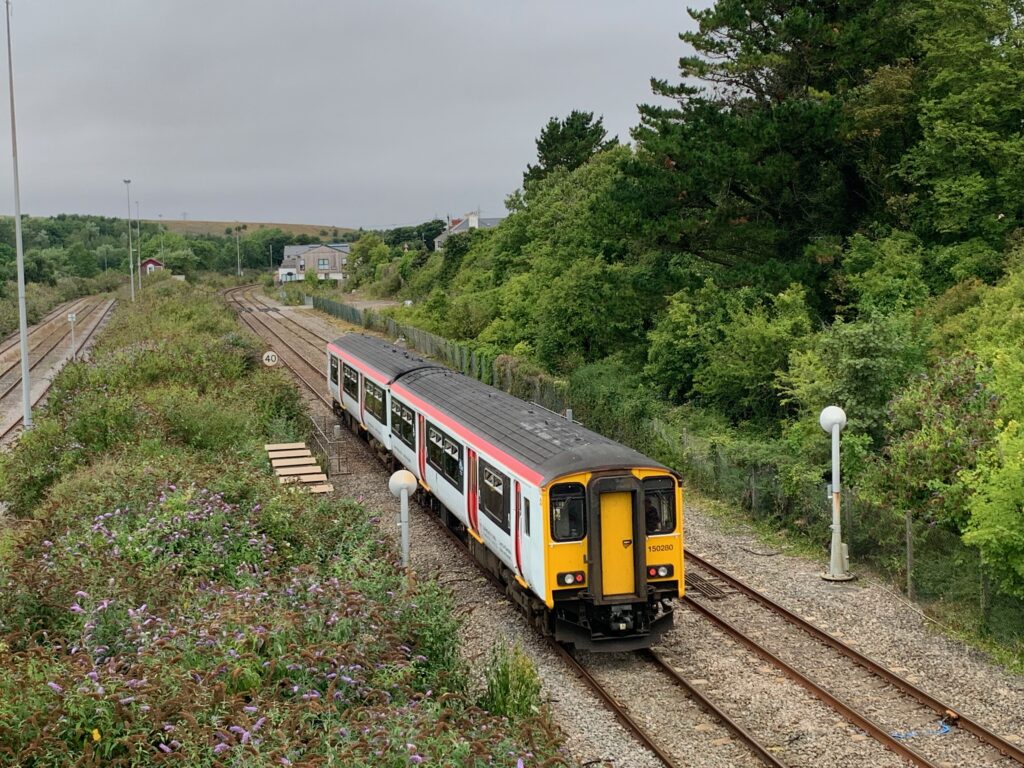
I am a fan of trains. Period. I am especially a fan of trains in Wales/Cymru because driving there can be slow and involves navigating narrow roads, steep corners and variable weather.
The scenery from Welsh trains is some of the most stunning in the world.
A major plus is that people are very friendly on trains and often include visitors in conversations. No one is averse to giving advice and directions or offering advice on everything from nice cafes to Welsh rugby.
The Negatives of Welsh Trains
Wales/Cymru suffered significantly from a series of cuts to its railway network in the 1960s due to the infamous Beeching report. Most rural branch lines in Wales/Cymru were closed, affecting small towns and villages and increasing isolation in many areas. The remaining network then suffered from significant under-investment for decades. The result is that today, the Welsh rail network suffers from:
- Gaps: with lower connectivity between communities compared to other European nations.
- Reduced Connectivity with fewer direct routes and longer travel times
- Infrequent Service: Most routes in Wales run with a frequency of every two hours, with slightly more frequent services on the Valley Lines and the North and South Wales Coast Lines, but it’s still insufficient.
- Single-Track Delays: Many routes use two-carriage trains on single-track railways, causing delays when trains must wait for others to pass, which disrupts schedules and reduces reliability. There were multiple times I missed connections and sat waiting at stations
- Shift to Road Transport: Closed railway lines have led to increased road traffic, greater wear and tear on roads, and more people using cars than the railway system.
- Poor Connections Between Trains and Buses: The connections between trains and buses can be quite poor, making seamless travel challenging.
- This means that while I’m not fond of bus travel due to its slower pace and limited amenities, reaching many tourist spots in Wales often requires a combination of train, bus, and occasionally even taxis (don’t bother with Uber here), to navigate the gaps in the rail network
These are not enough to convince me not to ride the trains but they need to be taken into account if you are planning travel through Wales.
Main Line Train Operators in Wales

Avanti West Coast, owned by FirstGroup and Trenitalia, operate between:
- London Euston
- Birmingham and Manchester
- North Wales

CrossCountry mainly operate from Cardiff Central and Newport to Central and North East England
- Great Western Railway (GWR), who connect London to South Wales
- Transport for Wales, who
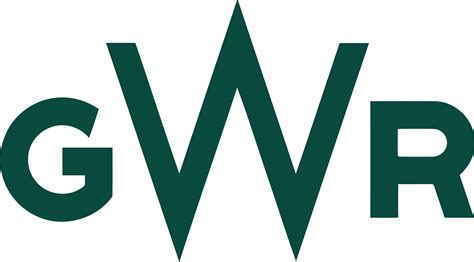
Great Western Railway takes you from
- London Paddington
- Bristol
- Swansea Bay
- Thames Valley & Cotswolds
- Devon & Cornwall
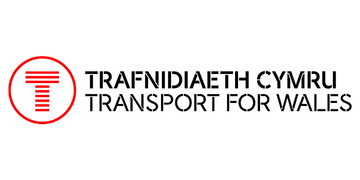
TFW run almost all train services in Wales, as well as connections from Wales to some of the most popular hubs in England, including Birmingham, Manchester and Chester. Transport for Wales trains offer comfy seats with backrests and reliable Wi-Fi. Most have charging ports for laptops and small devices.
Heritage Railways
Wales has a fascinating selection of heritage railways, a result of the drastic closures that occurred in the past. Volunteers preserved and reopened some of the closed lines, with heritage railways like the Talyllyn Railway and the Ffestiniog Railway revived and becoming successful tourist attractions. I will discuss this further next week.
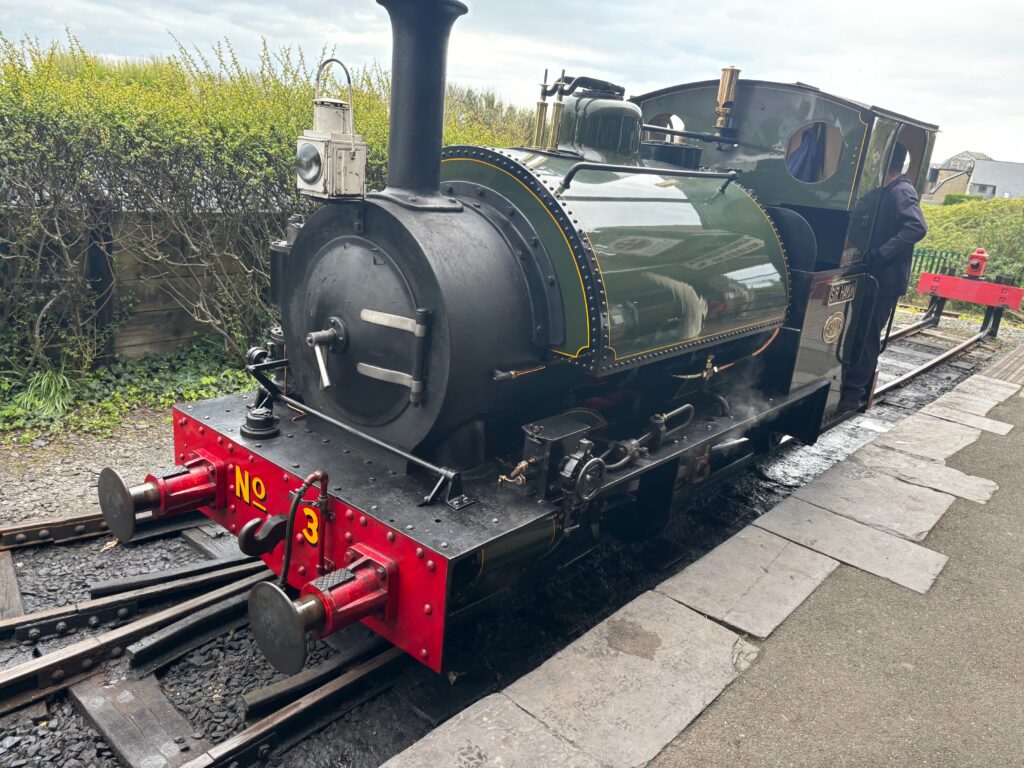

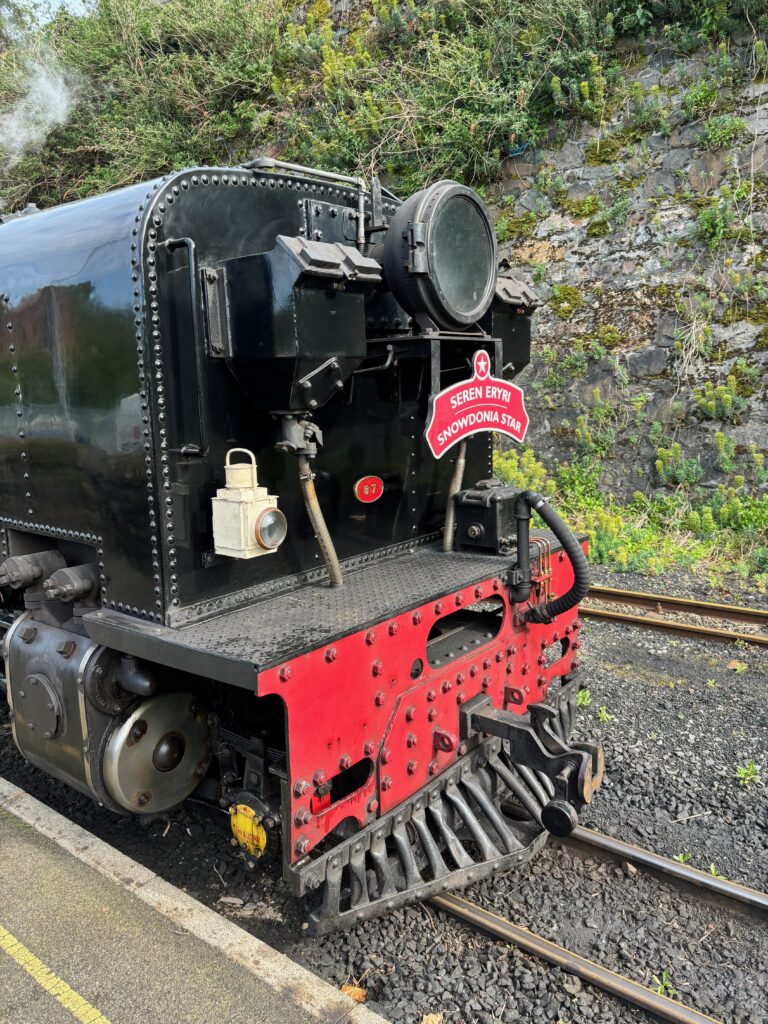
Ticketing
Tickets can be purchased online at Transport for Wales website or app without any booking fees. The Transport for Wales website can be used to buy tickets for all railway companies across the UK without extra charges.
You can also buy tickets from machines or staff at many train stations. However, many stations in Wales/Cymru are unstaffed, so you might need to buy your ticket on the train. Note that if the station is unstaffed and you purchase a ticket on the train, you might have to pay a penalty fee.
Several BritRail passes can be used on the Welsh rail network. I’ve travelled with various types of BritRail passes and found that single-journey tickets within Wales/Cymru can sometimes be cheaper than the BritRail Pass. The pass is most useful for travel from London to Wales, where you can save significant money on point-to-point fares. I typically choose a flexi-pass, which allows me to pick which days to use my pass.
Finally, if you’re between the ages of 16 and 30, or over 60, whether a British resident or a visitor, you can buy a railcard for £30, saving you 34% off fares.
Exploring the Routes in Detail
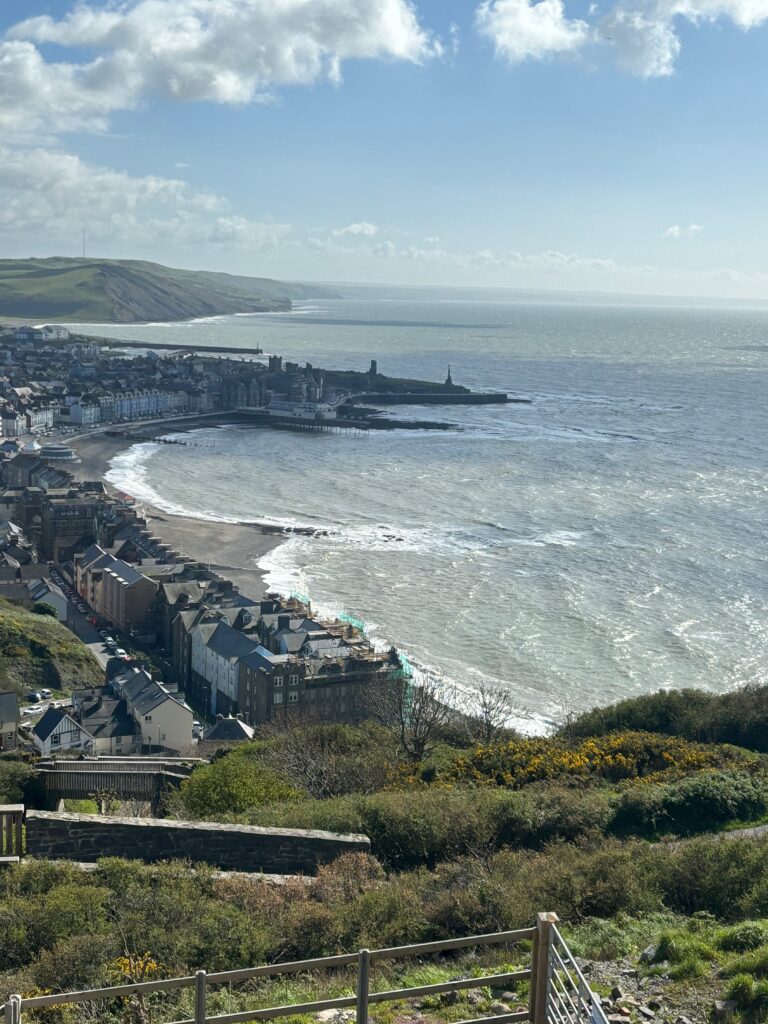
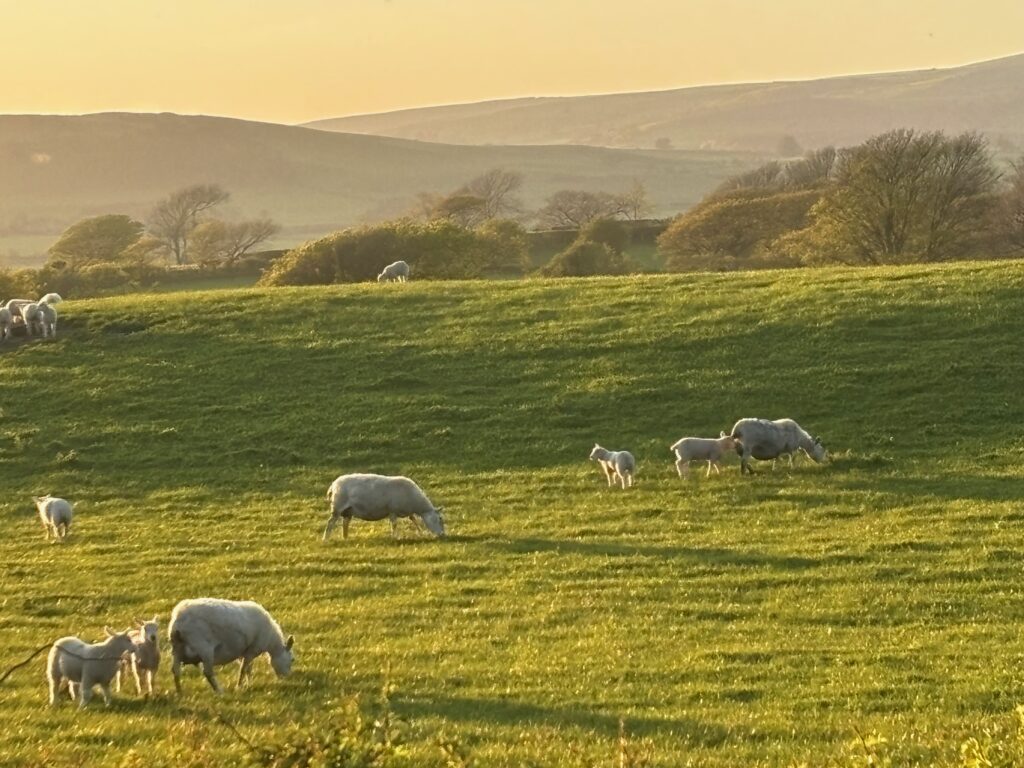
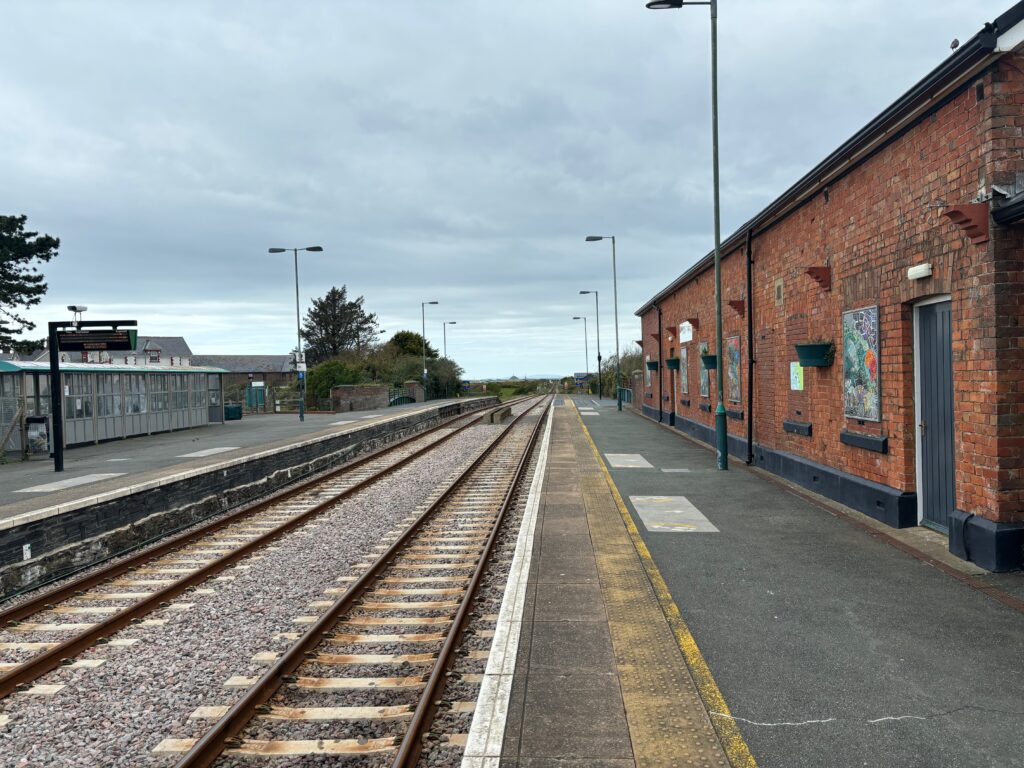
1. North Wales Coast Line
The North Wales Coast Line is a significant rail route that connects the ferry port of Holyhead on the Isle of Anglesey to Crewe via the historic city of Chester in England. Along the way, it passes through a range of unique Welsh towns and picturesque coastal areas. Here’s a guide to the key stops and their notable attractions:
- Chester, England: A city with Roman origins and medieval architecture, Chester is renowned for its ancient city walls, Chester Cathedral, and the unique Rows, which are two-tiered shopping arcades offering a unique shopping experience.
- Rhyl: Known for its sandy beaches and coastal walks, Rhyl also offers the Rhyl SeaQuarium, a popular family attraction, and the Rhyl Miniature Railway, a charming heritage railway.
- Colwyn Bay: This town features a long promenade perfect for strolls, the Welsh Mountain Zoo for wildlife enthusiasts, and Eirias Park, a versatile recreation space.
- Llandudno Junction: A key interchange, Llandudno Junction provides connections to the Victorian resort town of Llandudno, famous for its pier and Great Orme, and to the Conwy Valley Line leading to Ffestiniog.

- Conwy Station: Located in the historic town of Conwy, this station is near Conwy Castle, a UNESCO World Heritage site and my favourite castle in Wales. The castle, built by Edward I in the late 13th century, has eight towers and a complete set of medieval town walls.
- Bangor: Home to Bangor University, Bangor is one of the oldest cities in Wales, and it has a vibrant student culture. Visit Bangor Cathedral and Penrhyn Castle, a grand National Trust property. From Bangor, you can catch a bus to Snowdon Mountain or Caernarfon.
- Holyhead: The largest town on the Isle of Anglesey, Holyhead is also a major ferry port to Ireland. Though the town itself didn’t impress me, the South Stack Lighthouse, with its stunning coastal views, is a must-see. Additionally, the ferry to Ireland is a relaxing and scenic way to travel
2. Conwy Valley Line
Runs from Llandudno to Blaenau Ffestiniog, passing through Llandudno Junction along the way, providing a mix of coastal charm, historical significance, and access to some of Wales/Cymru’s most scenic landscapes.
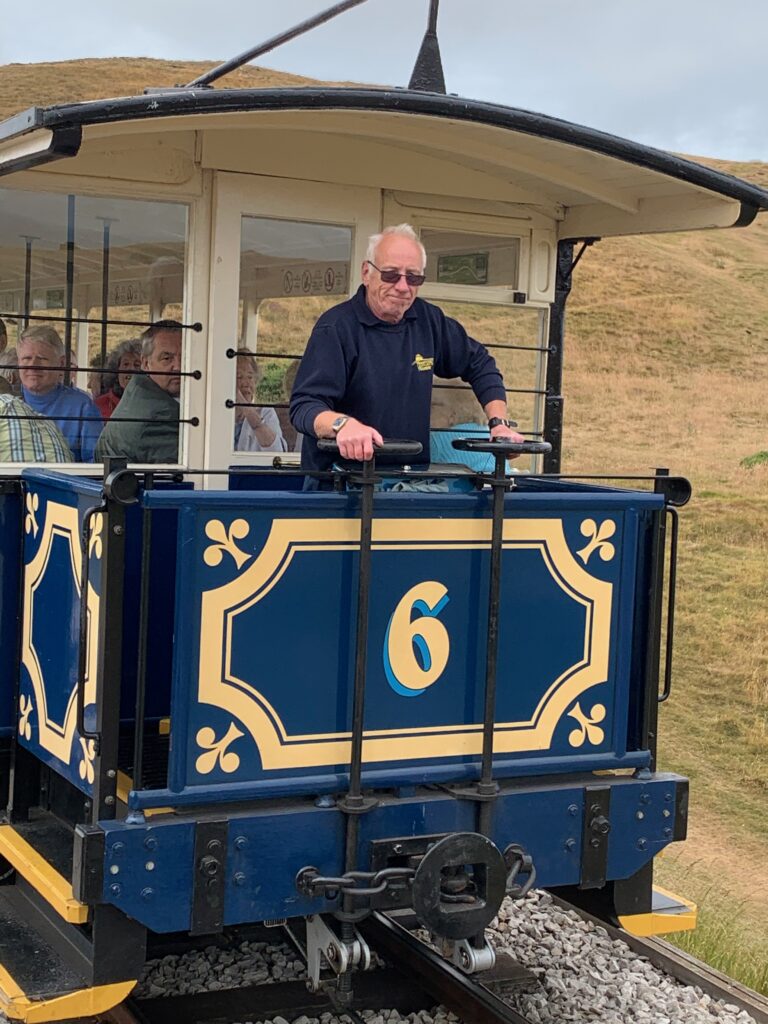
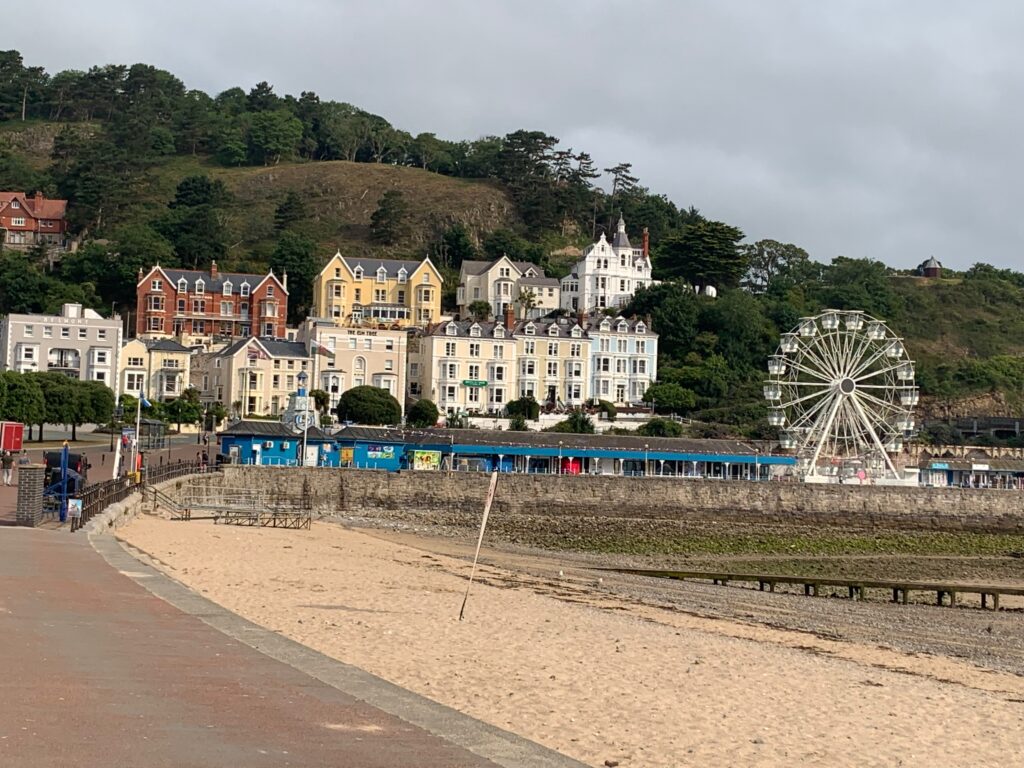
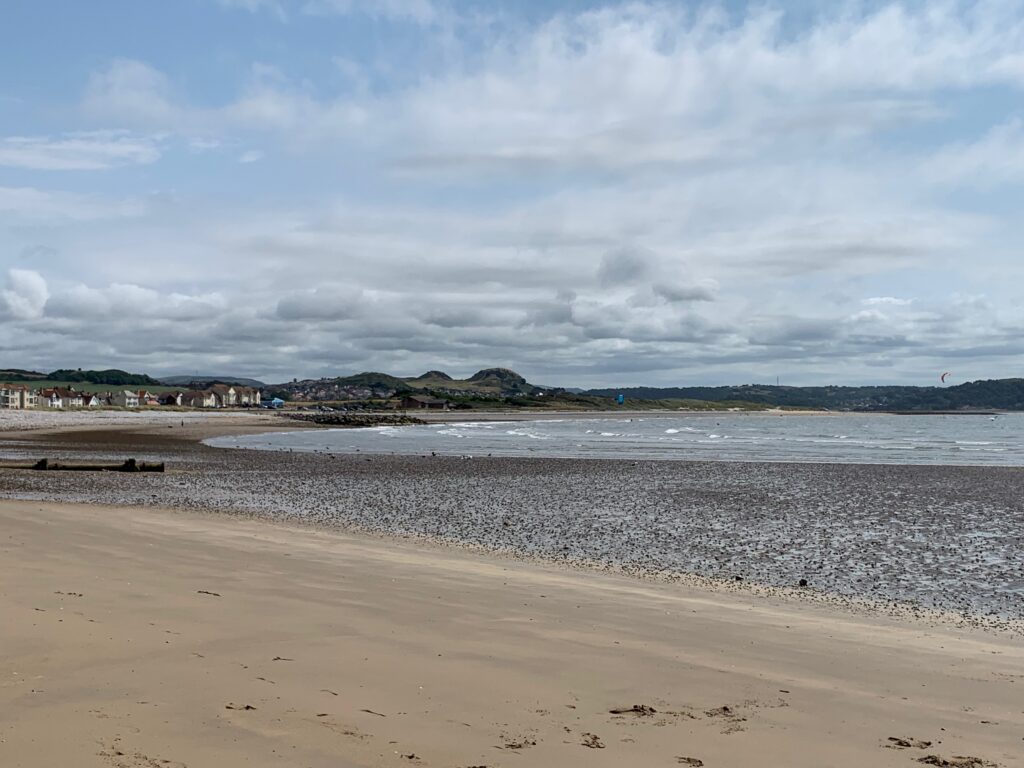
- Llandudno (pictured above) is a historic seaside town known for its sandy beaches and Victorian-era pier. It’s a popular destination for those seeking a traditional British coastal experience.
- Llandudno Junction is the main interchange on the North Wales Coast Line, connecting the Conwy Valley Line to other major routes. It’s the gateway to the Victorian resort town of Llandudno and other attractions along the coast. If you get stuck here between trains, I can recommend the station cafe!
- Blaenau Ffestiniog is a former slate-mining town that now serves as an entry point to Snowdonia National Park. It’s also home to the historic Ffestiniog Railway, a narrow-gauge heritage railway that offers breathtaking journeys through the Welsh mountains.
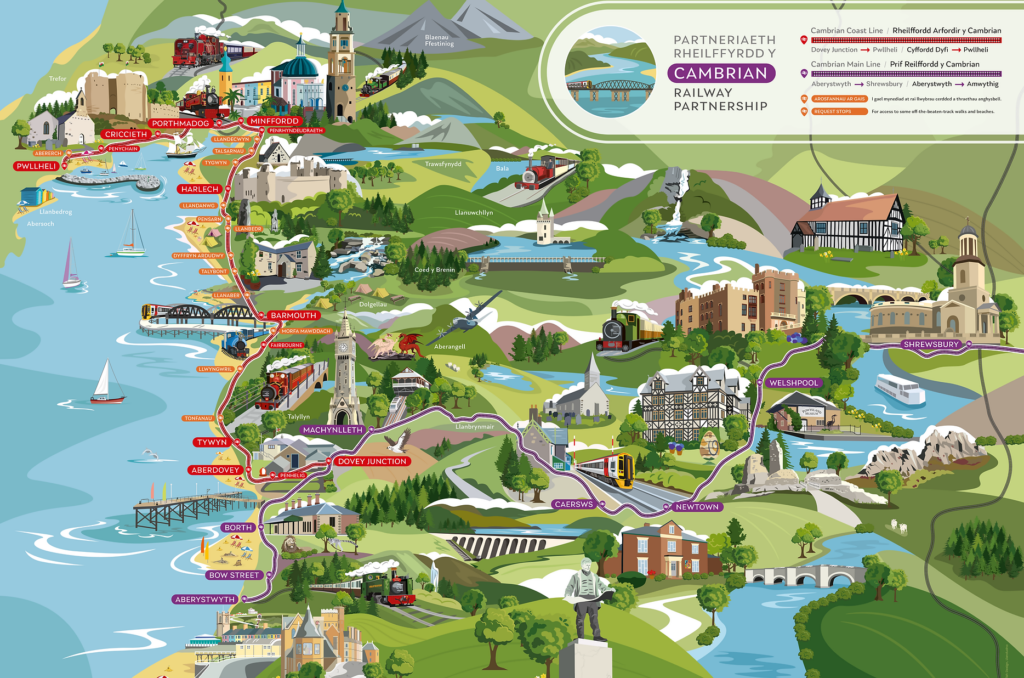
3. Cambrian Coast Line
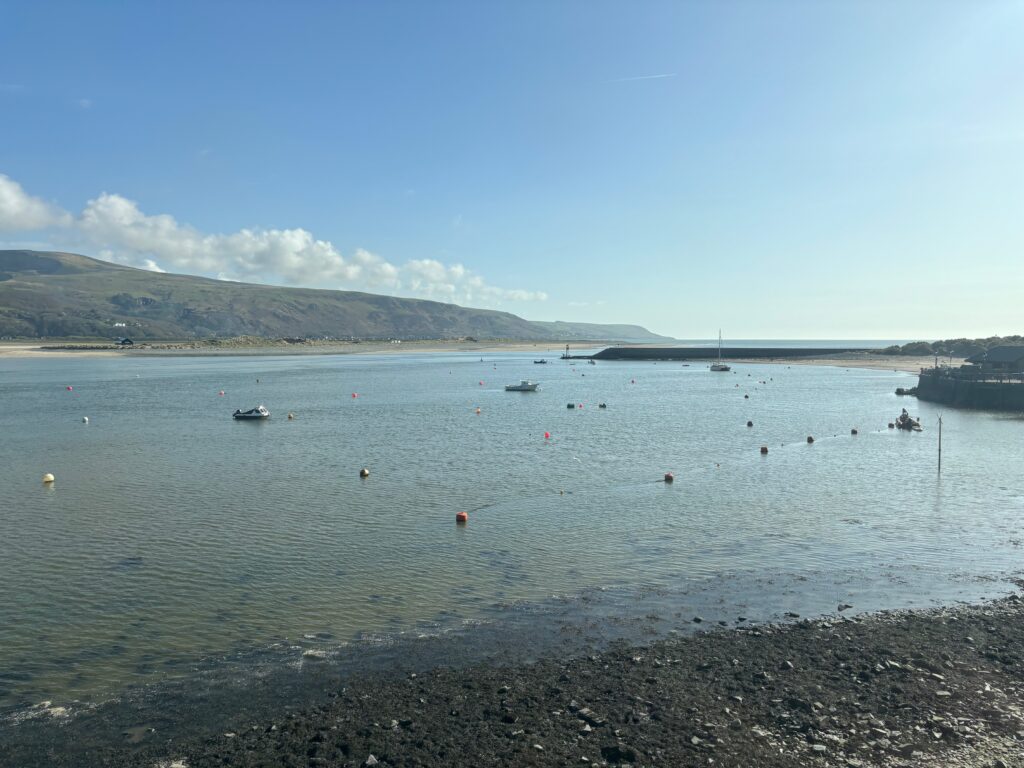
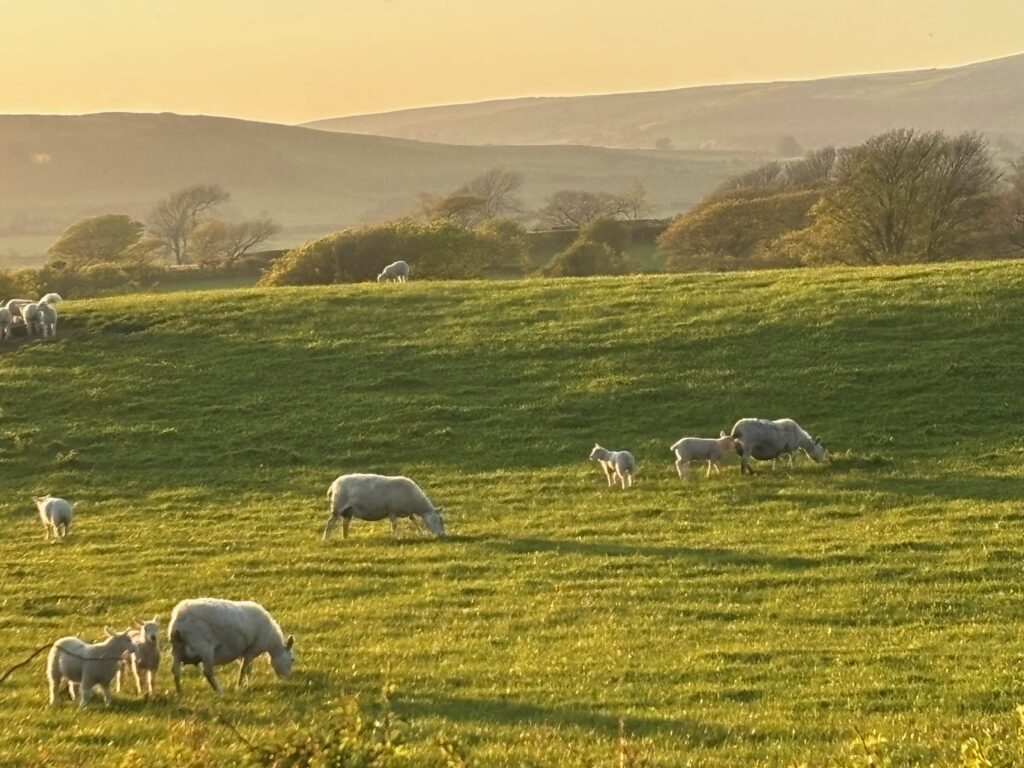
My personal favourite out of all the routes in Wales/Cymru, this picturesque railway route runs along the stunning coastline of West Wales, from Pwllheli to Machynlleth. The journey offers breathtaking views of the Irish Sea, sandy beaches, rolling hills, and charming seaside towns. Here are the key stops and their highlights:
- Pwllheli is a bustling market town on the Llŷn Peninsula. It’s a lively place with a marina and weekly markets, serving as a gateway to many coastal attractions.
- Abererch: a small coastal village in Gwynedd, known for its picturesque landscapes and proximity to stunning beaches. It’s a quiet retreat for those seeking to enjoy the natural beauty of the Welsh coast
- Criccieth is known for its medieval castle that overlooks the town and the sea, offering spectacular views and a glimpse into Wales’ history.
- Porthmadog is famous for its heritage railways, including the Welsh Highland Railway and the Ffestiniog Railway, both historic narrow-gauge lines that offer scenic rides through the countryside
- Minffordd, a village in Gwynedd, Wales, is known for being a key point on the Ffestiniog Railway, providing access to the beautiful Italianate village of Portmeirion and a connection to Porthmadog
- Penrhyndeudraeth: with a strong Welsh-speaking community, giving it a traditional feel with local businesses and an emphasis on Welsh culture. Also a good spot for outdoor activities, with nearby trails that lead into the surrounding hills and woodlands, providing opportunities for hiking and nature exploration
- Harlech is home to Harlech Castle, one of my favourite Welsh castles. This UNESCO World Heritage site stands proudly on a cliff with an impressive view over the coast.
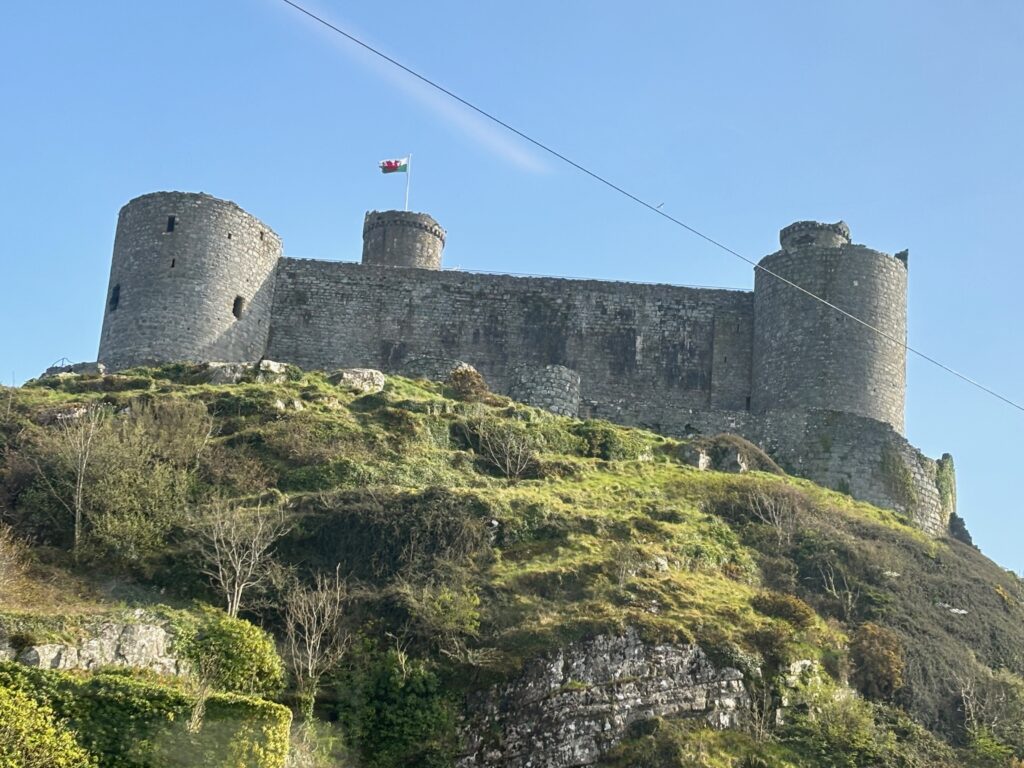
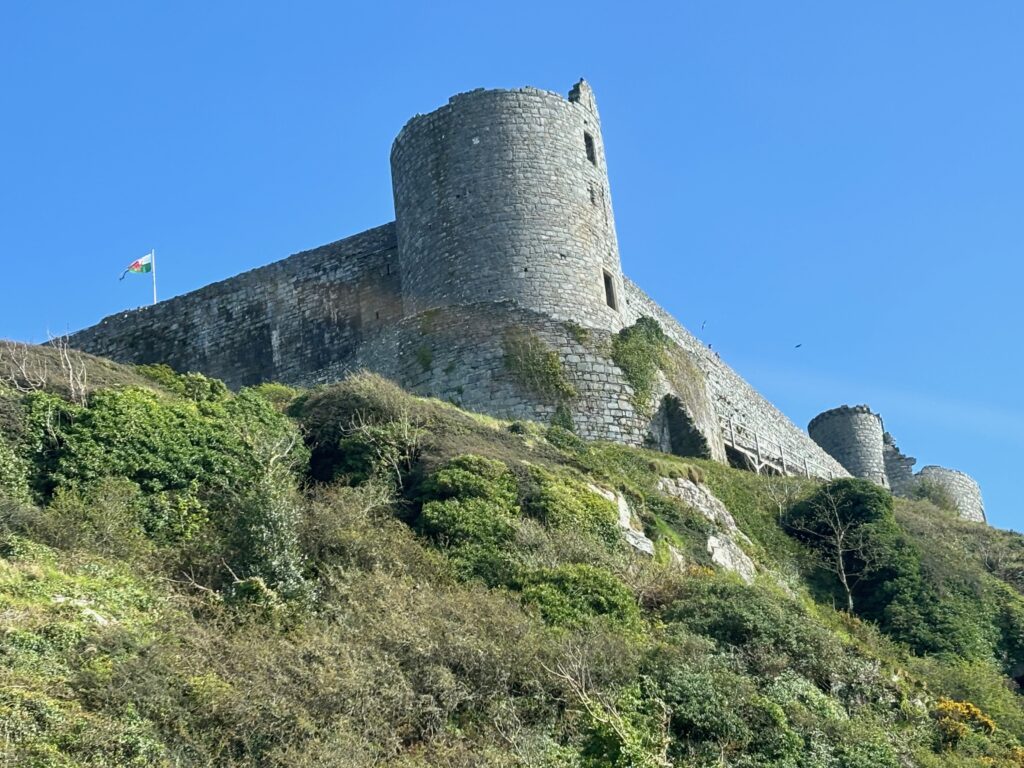
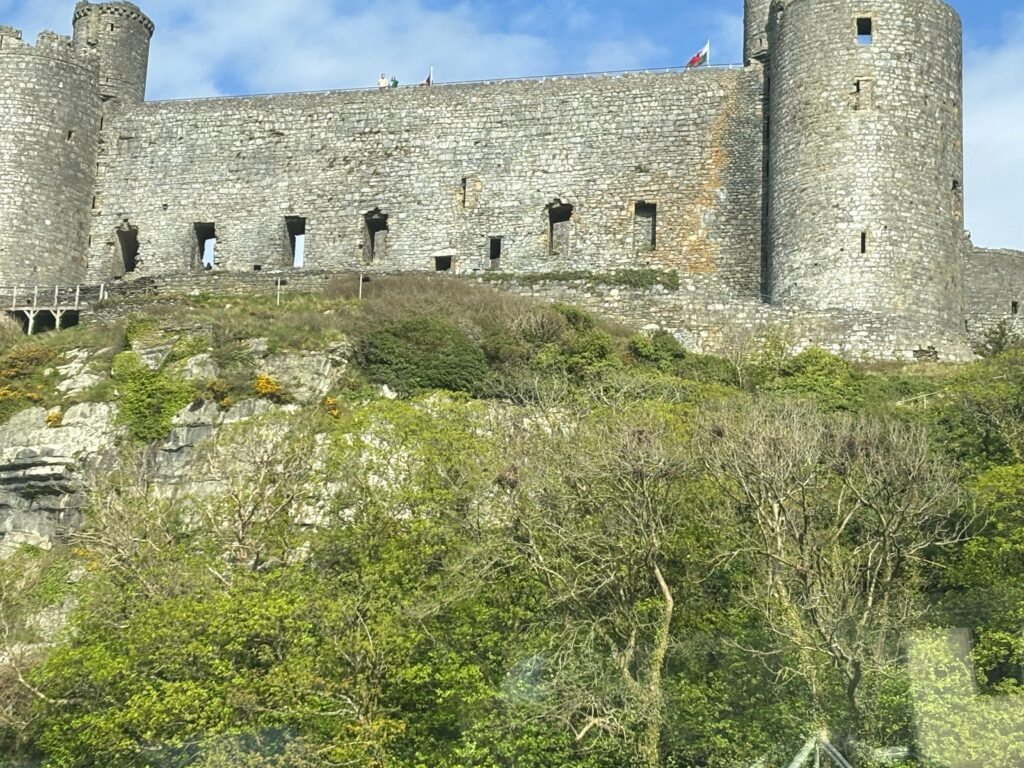
- Fairbourne: A small coastal village with a scenic narrow-gauge railway and a beach popular for family outings and water sports
- Barmouth is a charming town where the train crosses the iconic Barmouth Bridge, providing panoramic views of the estuary and surrounding landscape.
- Tywyn is a popular seaside resort known for its long sandy beaches and the historic Talyllyn Railway, a narrow-gauge line that has been in continuous operation since 1865.
- Machynlleth is an ancient market town on the edge of Snowdonia National Park. It’s also where the Cambrian Coast Line connects to the Cambrian Main Line.
4. Cambrian Main Line
The Cambrian Main Line connects the towns of Shrewsbury and Aberystwyth, providing a vital rail link through the heart of Mid Wales. This line offers a scenic journey through rural Wales, with views of rolling hills and river valleys, including the River Dyfi. Here are the key stops and their features:
- Shrewsbury is a historic town in England with medieval architecture and Tudor-style buildings. It’s the starting point for the Cambrian Main Line, offering connections to other parts of the UK.
- Welshpool is known for its charming narrow-gauge Welshpool & Llanfair Light Railway and Powis Castle, with its renowned gardens and grand architecture.
- Newtown the largest town in Powys, offering access to the Montgomery Canal and its picturesque towpath walks.
- Dovey Junction: A crucial transfer point connecting the Cambrian Main Line with the Cambrian Coast Line, located near the Dyfi Estuary.
- Machynlleth is a historic market town with a unique Centre for Alternative Technology. This is where the Cambrian Main Line connects with the Cambrian Coast Line, providing an opportunity to switch routes.
- Llanbrynmair: A village in the heart of rural Wales, surrounded by rolling hills and scenic landscapes.
- Aberystwyth is a vibrant university town with a Victorian promenade, the National Library of Wales, the historic Vale of Rheidol Railway, and the Aberystwyth Cliff Railway.
5. Heart of Wales Line
A scenic railway route spanning approximately 121 miles (195 kilometres), connecting Shrewsbury in Shropshire, England, to Swansea in South Wales. Known for its breathtaking landscapes, the line winds through the rural heart of Wales, offering views of rolling hills, lush valleys, and picturesque villages. Despite facing closure threats in the past, it remains a vital transportation link and a popular tourist route. I found the journey to be “leisurely” (i.e., slow), allowing me to soak in the beauty of the Brecon Beacons National Park and the Cambrian Mountains while I typed a report on my laptop using the free Wi-Fi! Stops include:
- Shrewsbury: The starting point of the Heart of Wales Line, Shrewsbury is a historic town in Shropshire, known for its medieval architecture and Tudor-style buildings.
- Craven Arms: gateway to the Shropshire Hills and Stokesay Castle, a fortified manor house
- Ludlow: market town famous for its food festivals, Ludlow Castle, and medieval architecture.
- Knighton: straddles the English-Wales border, located on Offa’s Dyke Path, a historic earthwork
- Llandrindod Wells: A historic spa town with Victorian architecture renowned for its therapeutic springs and gardens
- Builth Road: Located near Builth Wells, this station is the gateway to the Royal Welsh Showground, where the annual Royal Welsh Show is held.
- Llandovery: A market town with medieval roots, featuring castle ruins and historical significance.
- Llanwrtyd Wells: Famous for its quirky events, including the World Bog Snorkelling Championships, and a popular starting point for hiking and mountain biking.
- Cynghordy: check the impressive Cynghordy Viaduct with spectacular views as you ride over it.
- Llangammarch Wells: Another spa town, albeit smaller, with a peaceful atmosphere.
- Knucklas: A village with a notable viaduct, a remarkable engineering feat that provides spectacular panoramic vistas of the Welsh landscape.
- Ffairfach: access to Carreg Cennen Castle, a scenic fortress.
- Llanelli: with connections to the nearby Millennium Coastal Path.
- Swansea: a vibrant city with a bustling waterfront, museums, some great cafes and a lively arts scene.
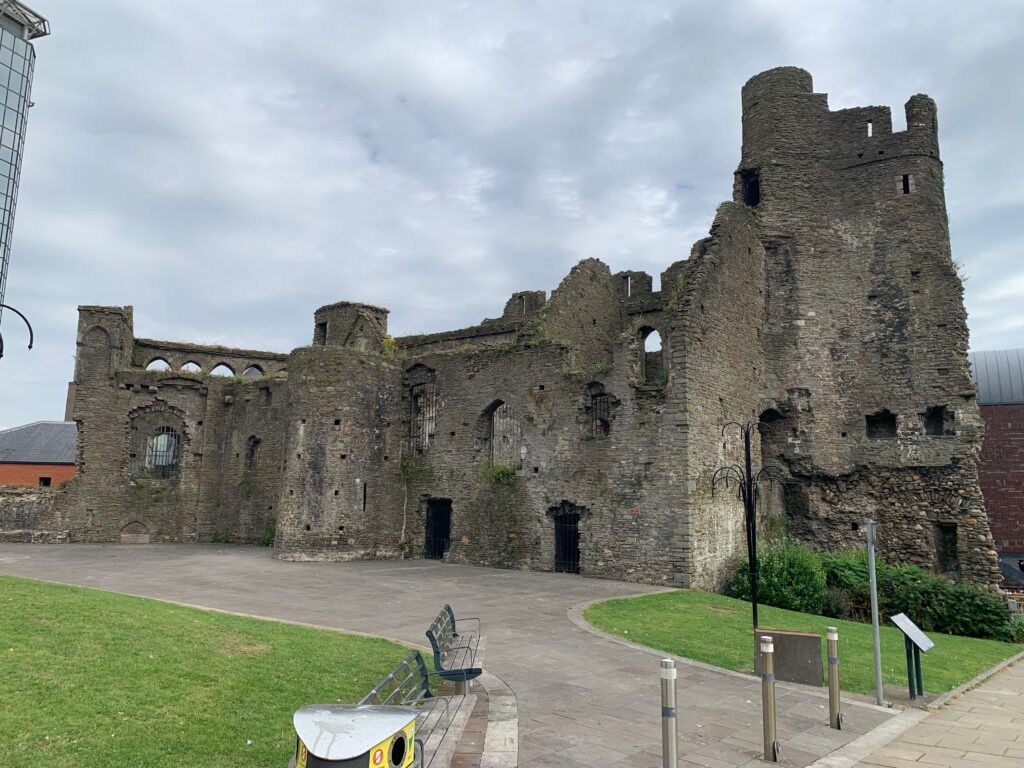
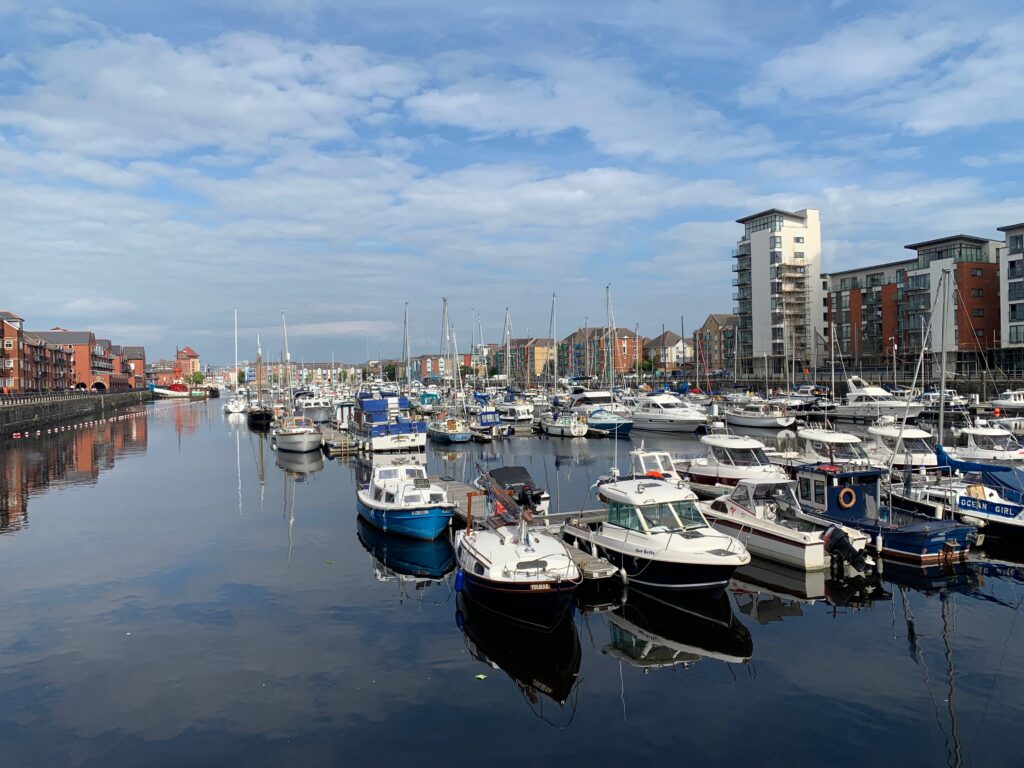

6. Marches Line or Marches Route
Shrewsbury to Cardiff. A crucial north-south transport corridor for both passenger and freight traffic, linking the West Midlands region of England to North and South Wales/Cymru. This line runs through the scenic Welsh Marches, a region straddling the English-Welsh border, It provides essential connections to major routes leading to London and Birmingham. This route offers travellers a blend of picturesque countryside but it is another slow trip:
- Hereford: A historic city with a stunning cathedral and a bustling city centre.
- Abergavenny: Known as the “Gateway to Wales,” this is a popular base for exploring Brecon Beacons National Park.
- Newport: A major city in South Wales with a rich industrial history and a key transportation hub.
- Cardiff: The capital of Wales, renowned for its vibrant culture, historic sites, and bustling waterfront area.
7. South Wales Main Line
The South Wales Main Line extends from Bristol to Swansea, with some trains continuing on to Fishguard. This line takes travellers through a mix of scenic countryside, bustling urban centres, and historic towns, offering a diverse and engaging journey through South Wales. Key stops along the way include:
- Bristol: One of my favourite English cities: check the Clifton Suspension Bridge, Aerospace Bristol (home of Concorde), SS Great Britain and the Museum and Art Gallery.
- Newport on the River Usk is an important town, historically known for its steelworks and dockyards. You will find Newport Castle, the University of South Wales’ Newport campus and the Newport Transporter Bridge
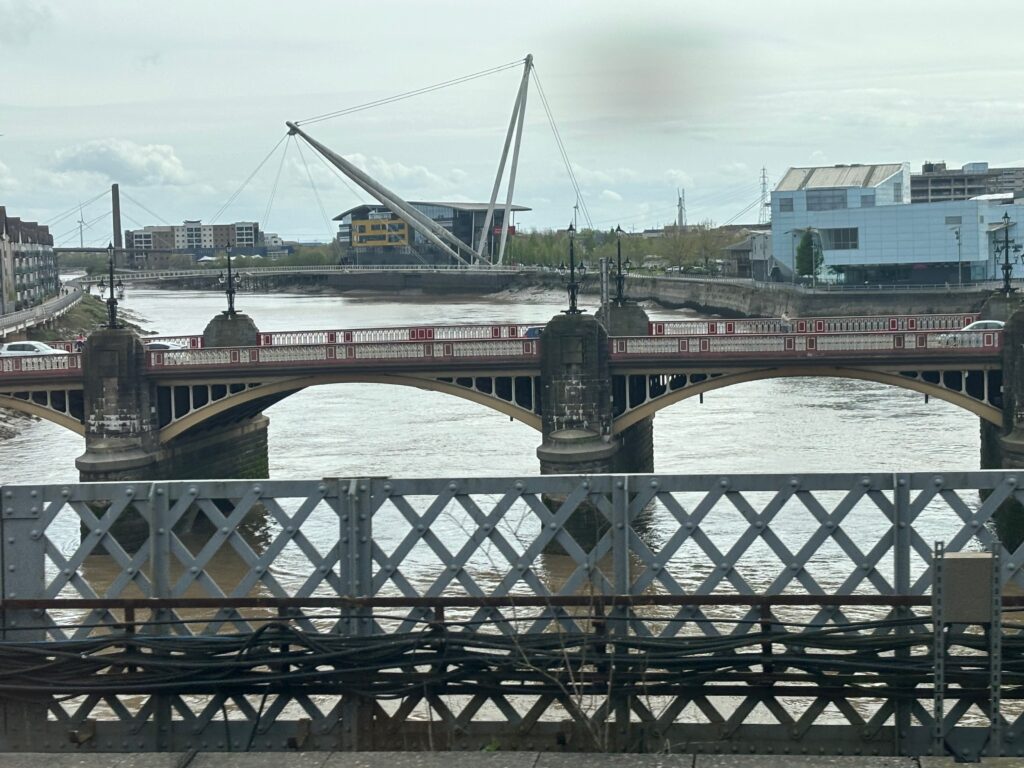
- Cardiff: the capital of Wales. At its heart stands Cardiff Castle, a medieval fortress with stunning views and fascinating tours, surrounded by the lush greenery of Bute Park. Down by Cardiff Bay, there’s a lively waterfront teeming with restaurants, shops, and cultural venues like the iconic Wales Millennium Centre.
- Swansea: I talk about Swansea above
- Pembroke Dock: A town steeped in maritime history, with connections to Pembroke Castle and nearby coastal areas.
8. The Valley Lines
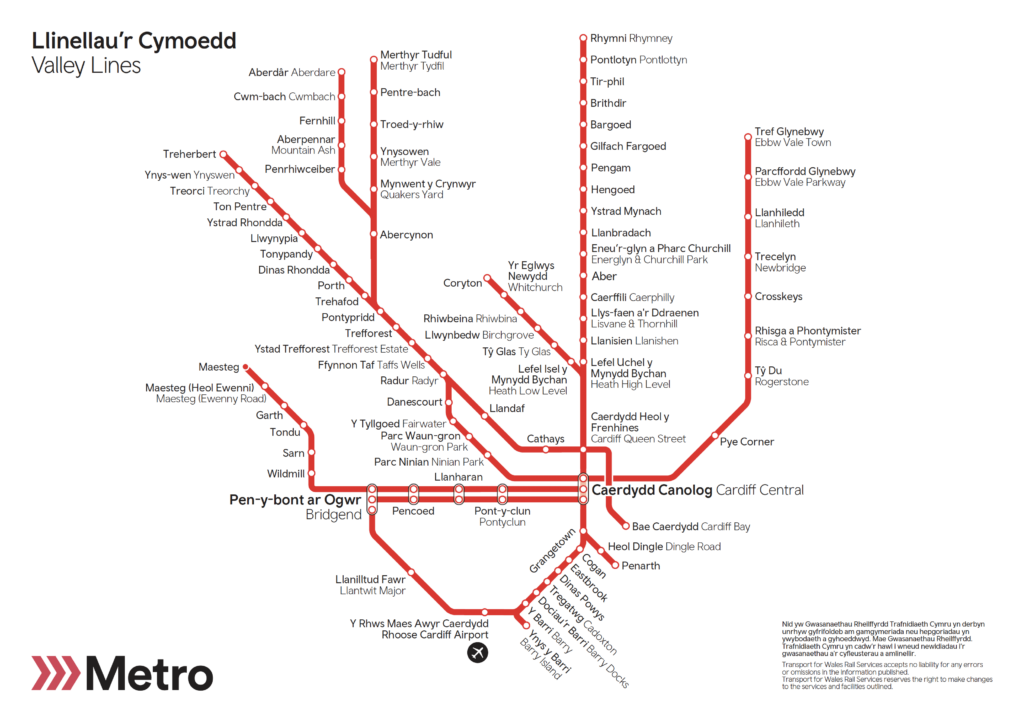
The Valley Lines radiate from Cardiff and are a key part of South Wales’ transportation infrastructure, principally supporting commuting workers and students. They are being upgraded currently as part of the South Wales meto projkect.
The key lines are
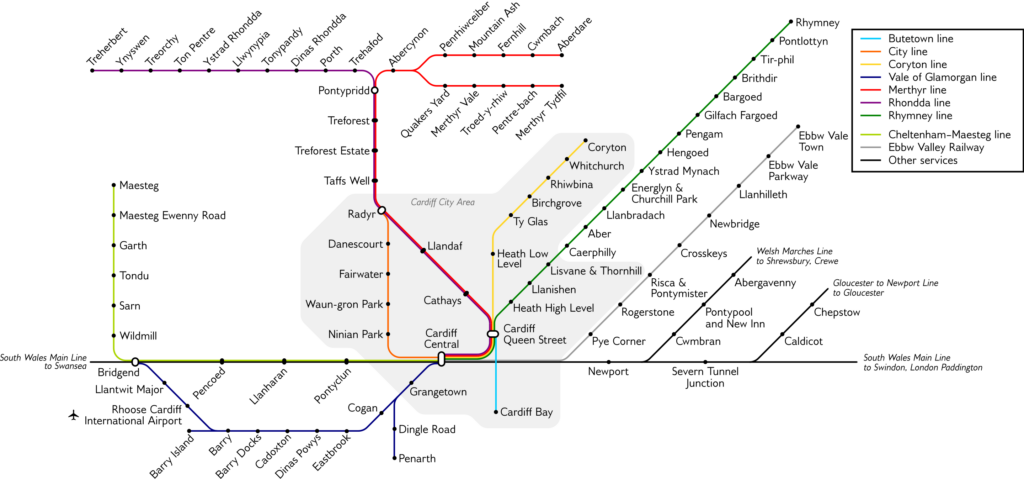
- Cardiff to Treherbert: Northwest through Rhondda Valley, passing through towns like Pontypridd and Porth before reaching Treherbert.
- Cardiff to Aberdare: Diverging at Pontypridd, this line follows the Cynon Valley and ends in Aberdare,
- Cardiff to Merthyr Tydfil: runs through the Taff Valley, with key stops at Pontypridd and Abercynon, before reaching Merthyr Tydfil, a town with a deep industrial history and links to Wales’ coal mining heritage.
- The Vale of Glamorgan Line runs to Barry and Bridgend via Rhoose (for Cardiff Airport) and Llantwit Major. For access to the airport, this line is very limited as frequencies are an hour on weekdays and two hours in weekends
- Cardiff to Rhymney: Northeast through the Rhymney Valley, with stops at Caerphilly and Bargoed,
- Cardiff to Maesteg: Heading westward, this line passes through Bridgend, , named after the medieval bridge over the River Ogmore. It is home to Newcastle Castle, a medieval castle perched on Newcastle Hill, overlooking the town centre. The castle dates back to 1106. Trains continue on to Maesteg, a town with a coal mining history.
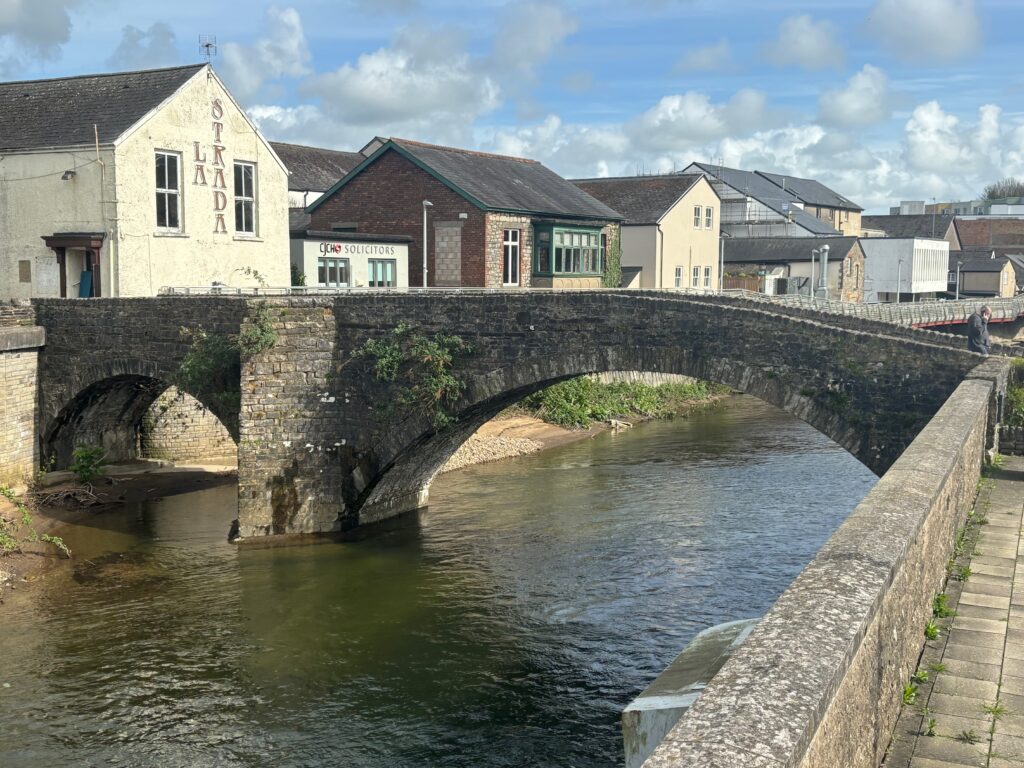
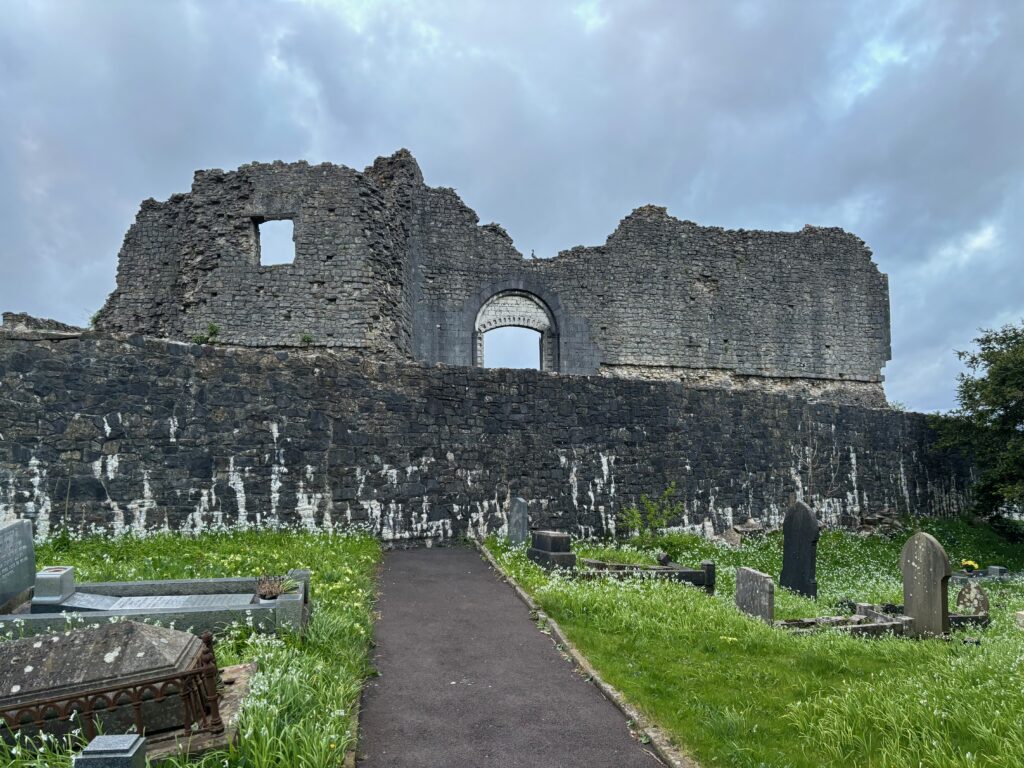
9. West Wales Railway Network
Swansea to Milford Haven
- Whitland: Nestled in the heart of the Pembrokeshire countryside, Whitland is your gateway to beautiful landscapes and a quiet, welcoming village atmosphere.
- Haverfordwest: As the county town of Pembrokeshire, Haverfordwest offers a mix of history, shopping, and dining, along with the charm of its medieval castle and scenic riverside walks.
- Milford Haven: A vibrant port town with a rich maritime heritage, Milford Haven features stunning waterfront views, a bustling marina, and access to scenic coastal trails.
Swansea to Fishguard Harbour
- Clunderwen: the perfect place to enjoy the rural beauty of Wales/Cymru and explore nearby villages and historic sites.
- Fishguard & Goodwick: These twin towns are renowned for their dramatic coastal views, local arts scene, and the fascinating history of the last invasion of Britain in 1797. Fishguard’s lively atmosphere and Goodwick’s scenic harbour make them ideal for visitors seeking both relaxation and adventure.
- Fishguard Harbour: Serving as a gateway to Ireland, Fishguard Harbour is a departure point for ferry travel, with stunning views of the sea and the surrounding coastline.
Swansea to Pembroke Dock
- Whitland: A quaint town surrounded by lush countryside, Whitland is an excellent base for exploring Pembrokeshire’s natural beauty and visiting local attractions.
- Pembroke: Known for the iconic Pembroke Castle, this town offers a glimpse into medieval Wales, with castle tours, reenactments, and nearby scenic walks.
- Pembroke Dock: Steeped in maritime history, Pembroke Dock has a charming waterfront and is an ideal spot to learn about Wales’s shipbuilding past.
Swansea to Carmarthen
- Llanelli: A bustling town with a rich industrial history, Llanelli boasts the scenic Millennium Coastal Path, ideal for long walks and cycling along the shoreline.
- Carmarthen: A town with a rich Celtic heritage, Carmarthen is full of historic charm, featuring a delightful castle, quaint streets, and the tranquil River Towy (pictured below)
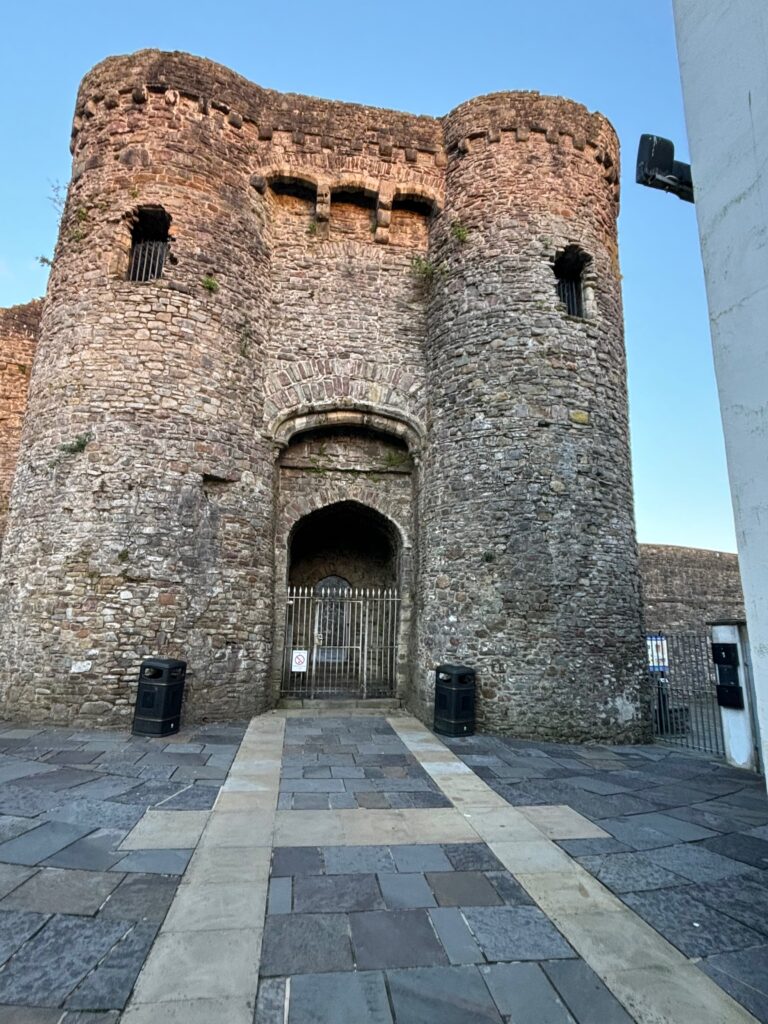
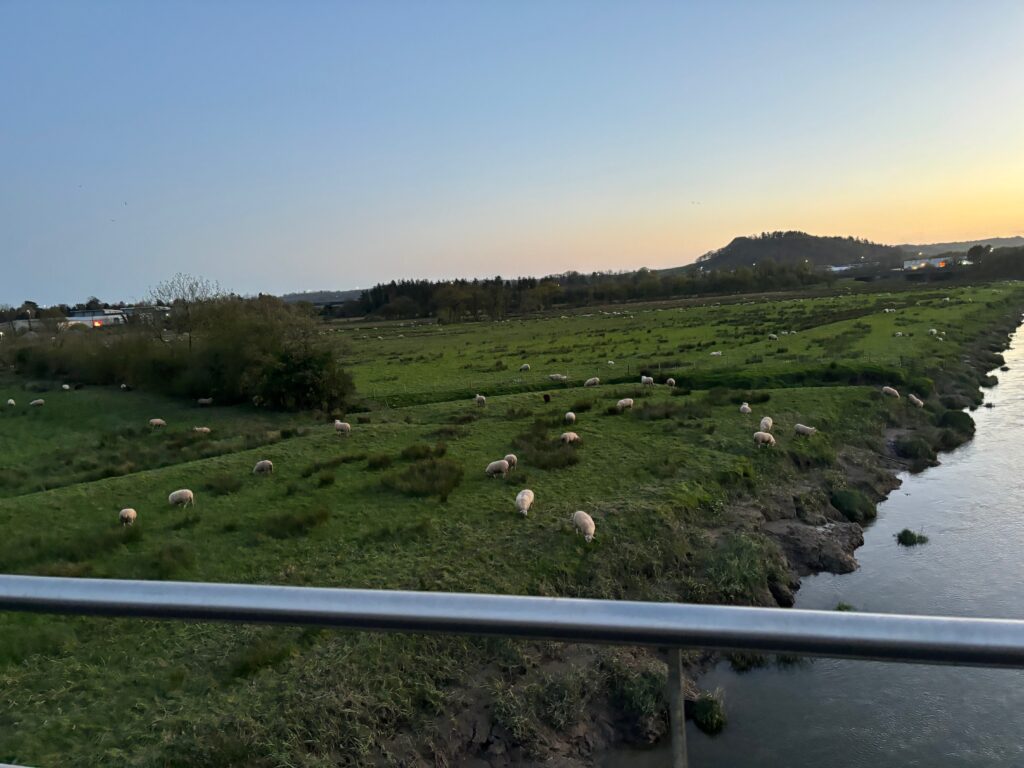

I love Wales! ( Dw i’n caru Cymru!) Happy travelling. Next week I will focus on riding the many heritage trains found in Wales/Cymru.
PS Cymru is the Welsh name for Wales and I have used it as much as I can in this article.



Leave a Reply